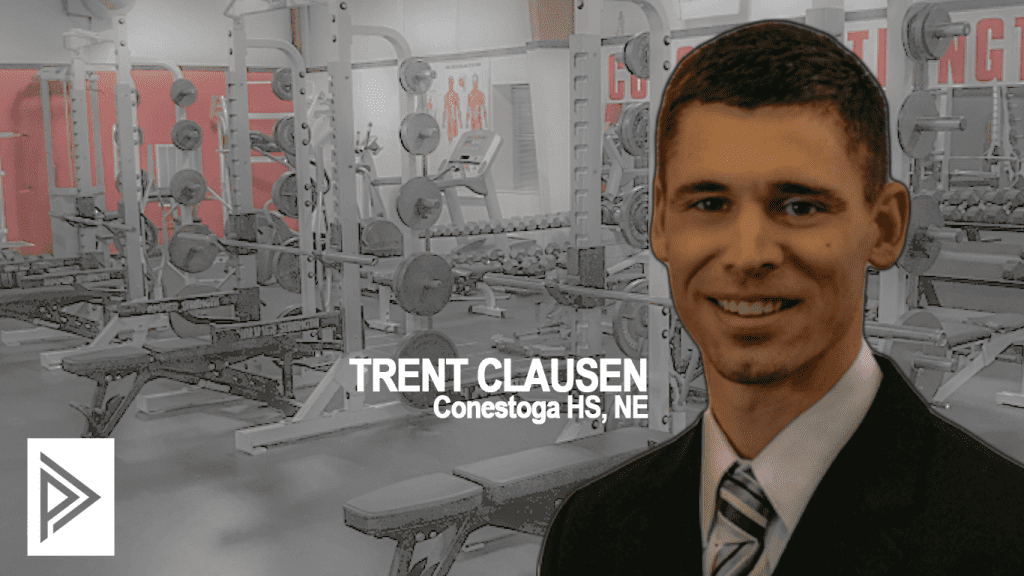[vc_row][vc_column][vc_column_text]
Intro to Strength & Conditioning – 5 Tips For Success
Every year, a new wave of high school students enter the weight room for the first time. Some students arrive excited and eager to work hard. Other students come nervous and scared about what the weight room has to offer. And of course, we all have the few students that think they already know it all. As the only high school Physical Education teacher at my small school in Nebraska, I get each and every student for an intro class. At Conestoga Jr-Sr High School, every freshmen student takes an Introduction to Strength and Conditioning class, where I introduce fitness and weight training. These are the 5 tips that I use to make sure my students are set up for success in class and beyond.1) Make The Weight Room Welcoming
It is important to remember that many of these students have never been in a weight room before. To expect students to jump in headfirst into weight training is like expecting a new swimmer to dive headfirst into the deep end. The weight room can be intimidating! Make it welcoming by starting off each day with something fun. At Conestoga, we start out the class with some sort of ‘Instant Activity.’ The goal of the Instant Activity is to let students get interested, get engaged, and get comfortable with class. Most of them are coming from sitting at a desk all day, so this helps them kick start their time in Introduction to Strength & Conditioning. Examples of Instant Activities:- Rocks, Paper Scissor
- Red Light – Green Light
- Tag
- Cone Reaction
2) Teach Movements Over Muscles
Many students walk into the weight room, looking for a chest workout, arm workout, or leg workout. My goal as a teacher is to make sure that students develop a vocabulary of strength and conditioning language they can take with them far past my class. In class, we make it a point to emphasize movements over muscles when it comes to what we are going to be working on. To help build the vocabulary, I will break it down for the students in some broader categories.- Squat
- Hinge
- Asymmetrical Squat
- Horizontal Push
- Horizontal Pull
- Vertical Push
- Vertical Pull
- Force Production
- Force Absorption
- Torso
3) Provide Constant Feedback – For Everyone, From Everyone
As we start to develop this wide range of foundational movements and exercises, students must receive feedback. While, of course, I am providing feedback throughout the weight room, I am not the only teacher. Students are expected to give each other feedback on their lifts and movements. And as teachers, we need to deliberately make this peer-peer instruction a part of the class. Example Workout Group of 4: Student 1) Main Exercise Student 2) Spotting Student 3) Watching and Giving Feedback Student 4) Accessory Exercise By intentionally creating a place for students to give each other feedback, it requires they also start to build their vocabulary. Past just the understanding of movement categories, students begin to develop a more performance-based vocabulary through my lessons and watching instructional videos. [/vc_column_text][/vc_column][/vc_row][vc_section][vc_row][vc_column][vc_separator][/vc_column][/vc_row][vc_row][vc_column][vc_column_text]Check out how PLT4M partners with coaches and teachers like Coach Clausen in the weight room!
[/vc_column_text][/vc_column][/vc_row][vc_row][vc_column width=”1/3″][/vc_column][vc_column width=”1/3″][vc_btn title=”Request A Demo” link=”url:https%3A%2F%2Fplt4m.com%2Fwant-to-see-more%2F|title:Want%20to%20See%20More%3F||” el_class=”red_button”][/vc_column][vc_column width=”1/3″][/vc_column][/vc_row][vc_row][vc_column][vc_separator][/vc_column][/vc_row][/vc_section][vc_row][vc_column width=”1/2″][vc_column_text]4) Meet Students Where They Are
For some students, it will just click. Other students will continue to struggle to figure out the basics. Meet each group where they are in their development and training. Because of the established framework set up, I can provide different modifications, progressions, and guided feedback based on how students are doing. A great example is the different challenges teaching the hinge will present, and how I can modify and alter movements for students. As we start to progress in the hinge and add in some lightweight dumbbells or barbells, students will struggle to maintain a neutral lumbar spine. To help students struggling, I will incorporate the Landmine RDL. I find it helps to ‘groove’ the hinge pattern for those that might be struggling to do so with more traditional exercises. Regardless of the variations being done, the entire class is still focusing on the hinge. [/vc_column_text][/vc_column][vc_column width=”1/2″][vc_video link=”https://www.youtube.com/watch?v=Zg7YfTlZ2g0&feature=youtu.be” el_aspect=”43″][/vc_column][/vc_row][vc_row][vc_column][vc_column_text]5) Remember this is just the beginning
For young freshmen students that are introduced to strength and conditioning, this is just the beginning. By helping students to feel both comfortable and confident in the weight room, we have the opportunity to empower them far past our class. Remember this Introduction to Strength and Conditioning class might not cover each and everything you wanted. Still, hopefully, you left students wanting more. Whether they come back for more with you or go seek out different exercise opportunities, your class will set them up for whatever will happen next. [/vc_column_text][/vc_column][/vc_row][vc_row][vc_column][vc_separator][/vc_column][/vc_row][vc_row][vc_column width=”1/4″][vc_single_image image=”7958″ img_size=”medium”][/vc_column][vc_column width=”3/4″][vc_column_text]Meet the Author: Trent Clausen, CSCS, RSCC, USAW-2
- PE Teacher, Strength & Conditioning Coordinator, Head Football Coach, Powerlifting Coach at Conestoga Jr-Sr High School
- Previous experience as an Assistant Strength & Conditioning Coach at the University of Maryland (Football S&C) and the Director of Sports Performance at Athletes’ Training Center in Omaha, Nebraska
- Completed S&C internships at the University of Nebraska – Lincoln (Football S&C) and Texas Christian University (All Sports S&C)
- Bachelor’s Degree from the University of Nebraska – Lincoln in Nutrition, Exercise, and Health Science
- Master’s Degree from Ball State University in Physical Education and Sport Coaching
- Earned Teaching Certification from the University of Nebraska at Kearney









